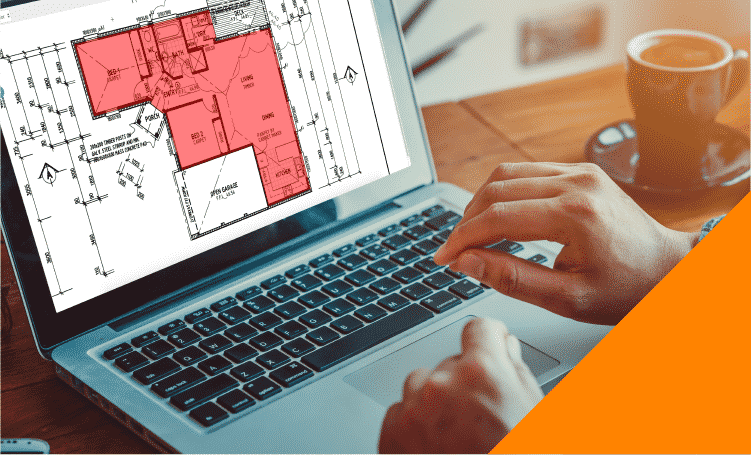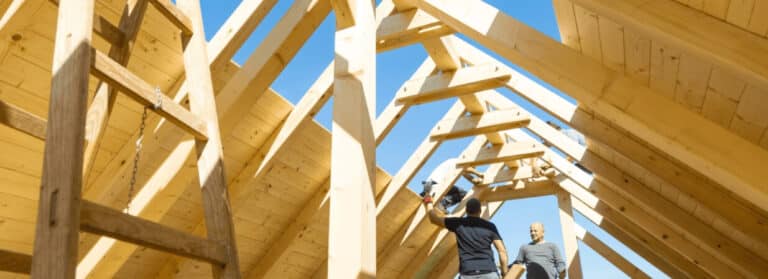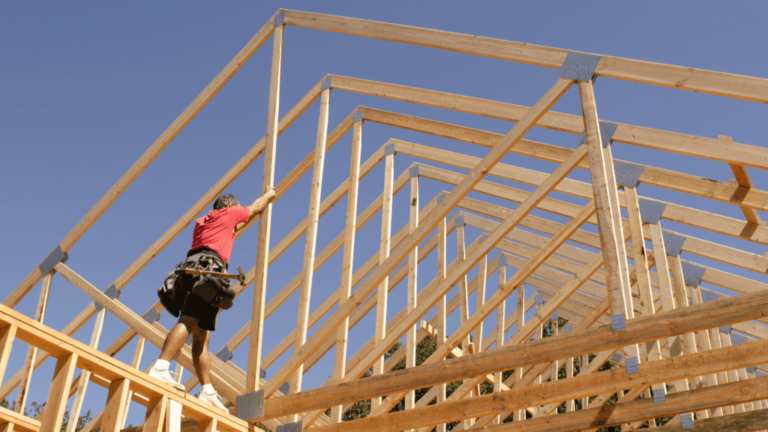Many large construction companies understand the importance of a construction proposal, but it is often overlooked by smaller builders and remodelers. That is usually because they don’t understand what a construction proposal actually is.
Here, we will look at why they are important, what they should include, and how to create a construction proposal that wins you bids.
What is a construction proposal?
A good construction proposal can be your showcase, your protection, a legal contract, and a great marketing and sales tool for your construction company.
It is much more detailed than a project bid and can help avoid conflict later on during the construction. Imagine if the project owner thought your part of the project was to include work you don’t perform–then you could easily refer to the construction proposal where you would show exactly what you have been contracted to do and where your obligations lie.
The construction proposal process will help you decide a project’s feasibility and whether the client’s expectations are realistic and achievable. If they aren’t, your proposal allows you to offer the client a realistic alternative that outlines exactly why your business proposal would work better.
Just by producing a good construction proposal, you can show proposed clients how well you know their construction project while also promoting your business, skills and reputation.
The construction proposal also includes task scheduling to monitor the build’s progress throughout the construction process. This ensures the job stays on track.
We recommend that you begin by looking at free construction proposal templates. Starting with a simple construction proposal template and then comparing that to a top-quality proposal template. Whatever construction proposal template you use, you must ensure that your proposals are presented in a professional way.
Key items to include in a construction proposal
Your construction proposal template should include:
- The scope of work;
- An estimate of the project cost;
- The client’s information;
- A payment schedule;
- The start and finish dates;
- What happens if there are hidden defects or unforeseeable conditions;
- A work schedule;
- What happens if there are any changes or extras needed during the build;
- And, your warranty.
However, these are not the only things you need to consider. The construction proposal must be accurate, clear and easy-to-read with a good layout and personalized to your business. Importantly, it needs to be produced in a timely manner. There is no point in it if you complete it days after the clients have closed the bidding.
Detailed Scope of Work
We recommend you spend a lot of time on this section, making it as detailed as possible, listing the services and tasks you provide. As mentioned, you don’t want to get stuck doing work you didn’t agree to because your scope of work wasn’t detailed enough.
Perhaps you are a contractor or renovator who specializes in cabinet making and carpentry, and suppose your client wants to have their kitchen and bathroom remodeled. You are happy to install the cabinets and cupboards, but you do not do tiling. Your construction proposal should detail the work you will do. If you use a sub-contractor to do the tiling, their information and estimated cost should be included. Making it clear who will be doing the tiling.
Cost Estimate
Your cost estimate should also be very detailed, leaving nothing out. It needs to include all direct costs like labor (including sub-contractors), equipment, the quantity takeoff, which counts all the materials necessary to complete the build, plus an amount for allowances. You must also include all your indirect costs, like rent on your office and running costs.
Owner information
For it to be a legally binding contract, your construction proposal must include all the parties involved and your client’s details; spelled correctly with no mistakes, and they must sign it.
The construction proposal also details what their obligations and liabilities are, as well as any information or resources they are required to provide. Once again, the construction bid proposal is a safeguard for you and your clients.
Payment schedule
This section is very important for your company’s cash flow. It sets out the terms and conditions of payment. There may be local construction industry laws and regulations that may dictate some of the conditions, but this section can safeguard you against clients refusing to pay because they have a dispute. Here, you can layout whether the client makes payments as you reach milestones or that the client makes them on certain dates. Also, you can include when payments for extras or unforeseen issues are to be paid.
Start and finish dates
Adding the start and finish date of the proposed project is also very necessary because the costs that you establish often are based on the job going ahead at a certain time. If the dates alter, then it is quite possible that the price of materials and labor may change, too. You should also include the date the notice to go-ahead with the project was given to all the contractors.
You should also note when milestones are to be achieved and who is liable for delays, depending on the cause of the delay–more safeguarding for you and your clients.
Now, there are several mistakes that builders make when estimating and making a construction bid proposal:
Hidden defects and unforeseeable conditions
Often forgotten is the need to define who is liable for the costs of hidden defects and unforeseeable conditions.
These hidden issues may range from something common like mold behind the walls, to something less common like underground boulders that weren’t expected. In these cases, there will be extra costs associated with the testing, handling, cleanup, containment, disposal or destruction of the unforeseen issue.
By adding this section to your construction proposals, you can save yourself a lot of time, money and conflict.
Schedule
In the construction project schedule, you must include the amount of time it takes to get permits and approvals, the order of work, and the order of completion. When creating your project timeline don’t forget to consider possible delays from weather, delivery services and other factors outside your direct control.
Changes and extras
At the time of writing your proposal, there won’t be any changes or extras to apply. So, this is where you detail what happens and who is liable for anything that may come up after the build starts.
Warranty
Another safeguard of a construction proposal is the warranty section. Here you detail what work you are liable to fix and under what circumstances, and it also details what you are not liable for– normal wear and tear, for example.
Tips for creating a winning bid
There are no construction proposal templates that can guarantee that your bid will be the winning one every time. However, when you write proposals that are clear, accurate, personalized, include all the details necessary, and showcase your business, then you are on your way to landing your next project.
Don’t forget to follow up on your budget proposal or your marketing proposals to bring in more potential clients. Make proposal follow-up part of your sales process.
Give your proposals a personalized touch
The difference between a good construction proposal template and a great proposal is its professional design. It could be as simple as finding a free construction proposal template, adding your company logo, changing fonts to reflect your business style and adding a cover letter.
Pay attention to what your clients need, make the review of your proposal easy and make sure the clients read clear instructions and information throughout the proposals you create.
Focus on the details
It is super important to focus on the details in construction proposals. Make sure your quantity takeoffs are accurate, that they include everything, even descriptions, pictures or graphs. Give your clients clear and understandable information that they can rely on.
Use a construction proposal template to make sure you don’t miss anything.
Ensure your data is accurate
Make sure everything you include is accurate, any mistakes can damage your reputation and lose you bids. Your client wants to trust you, but errors make them wary.
Example of a construction proposal
Why you should use estimating software during the proposal process
As we pointed out earlier, getting your proposals done in a timely manner is crucial to winning project bids. Using cloud-based estimating software will help you get the job done about 80% quicker than doing it by hand and when deadlines are present, speed is a must.
The specific project proposal can then be stored with the rest of the project’s documentation, where it can be accessed quickly and from anywhere that has an internet connection. You can also store your construction proposal templates online for easy access, ready for your next construction project proposal.
When you win more bids, complete projects on time and you remain within the budget, then your profits will increase, and making money while saving time is what it is all about.
Why not save time, build your reputation, your business and your profit with us? Book a demo of our Buildxact estimating and project management software or start your 14-day free trial today. Your next project and your potential client could be one proposal away.

























